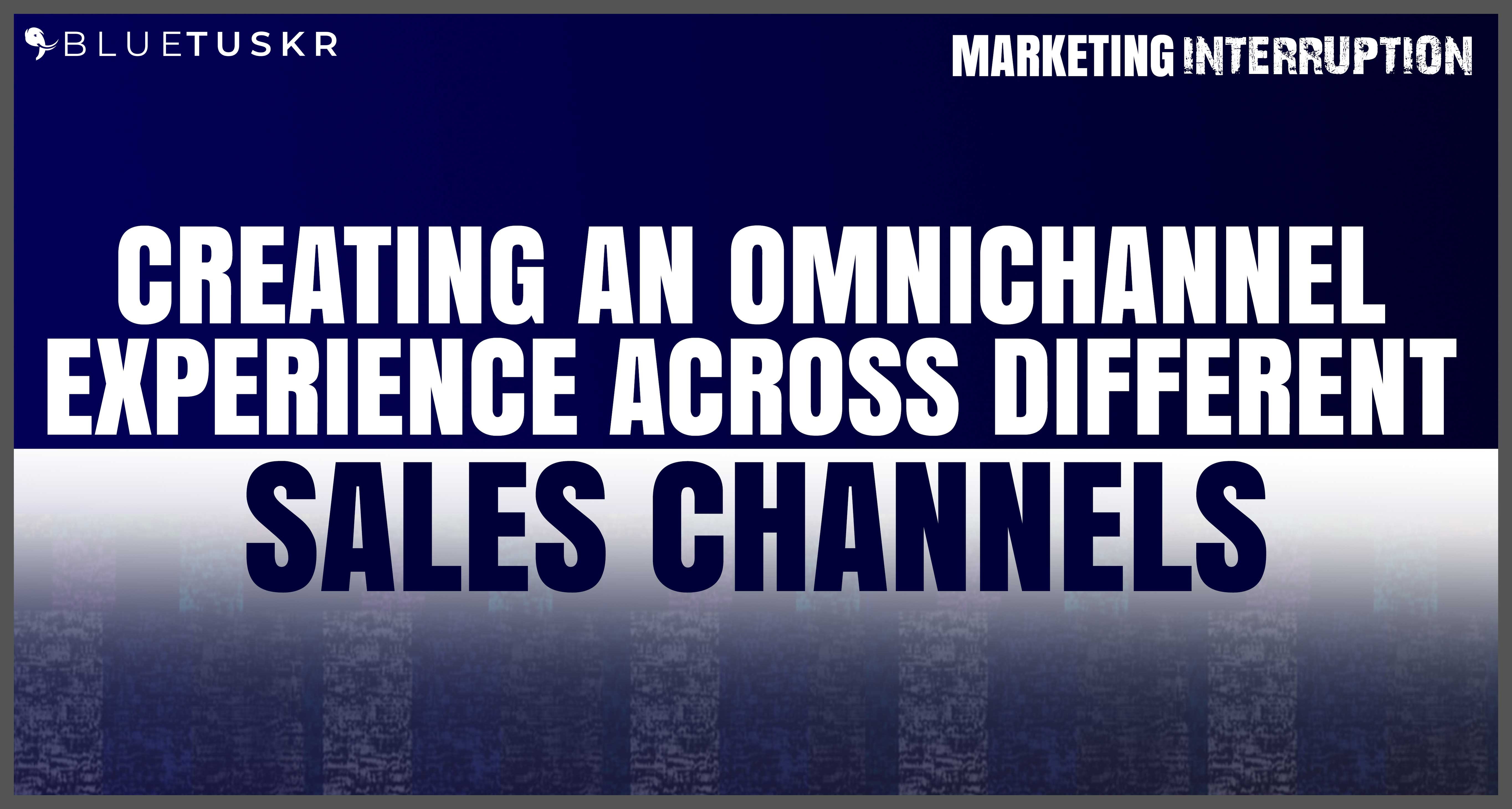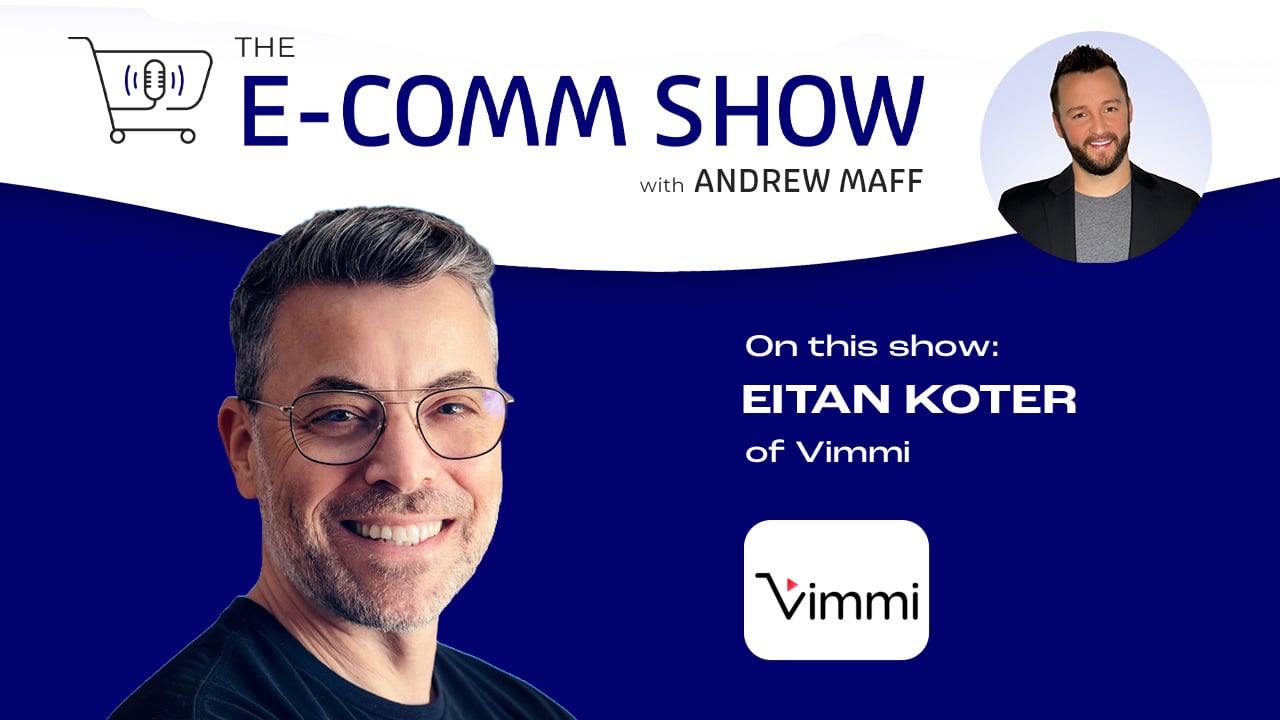Creating an Omnichannel Experience Across Different Sales Channels

On the 42nd episode of Marketing Interruption, your host Andrew Maff talks about how e-commerce brands can and should create an omnichannel experience for their customers to keep as much brand awareness as possible while allowing the customer to be more comfortable with their purchase.
Tune in and enjoy today's interruption!
LEAVE SOME FEEDBACK:
If you enjoyed the show, please be sure to rate and review!...and of course, SUBSCRIBE!
Have an e-commerce marketing question you'd like Andrew to cover in an upcoming episode?Email: marketinginterruption@bluetuskr.com
CONNECT:
BlueTuskr.com | AndrewMaff.com | Twitter: @AndrewMaff
TODAY'S EPISODE:
00:40
Hello, Episode Number 42 marketing interruption in Andrew Maffettone I'm gonna piss off Amazon sellers again. So yesterday's episode was interesting, and I got some odd feedback from it and someone wanted a little bit more detail in that whole omni channel approach thing that I mentioned. So I'm actually gonna dive back into this. So omni channel approach I was referring to was bait Well, if you didn't listen to yesterday's episode, go listen to it and then come back. But I will also give you a brief overview of what I had mentioned was adding different marketplace buttons on to a product page, and the benefits and cons of that. So I'm going to kind of get a little bit deeper into that today. So omni channel approach basically means mate, keeping your brand consistent and everything across the board and that means all everywhere that you could possibly buy your product This also includes brick and mortar but for now I'm sticking to e commerce, Walmart eBay jet if you can still sell there even No, I don't work with them anymore. wayfair overstock anywhere that you're selling your product images need to look the same. Your product titles need to be the same. Your practice descriptions and everything need to be as remotely close to possible that they can be I know each of these marketplaces has different rules or whatever, but you know what I mean? So keep the branding consistent, keep the brand voice consistent. You're gonna see improved conversion rates. On all marketplaces, and the reason is because if someone comes to your website and they're really interested in purchasing, and if you keep hearing like clapping, if you watch this on YouTube, you'll see I'm a very animated like, all over the place. And I'm sorry that I'm clapping on the microphone, but you'll see that your conversion rates will improve across the board. And the reason is, is that everyone will come to your website will see your brand and get familiar with your brand. feel right. So the brand voice, the brand, aesthetics, the overall branding, and they're like, this is a great product. I don't know if I want to wait two weeks to get it or I don't know your shipping policy is or for whatever reason, then they leave. Then they come across your product again on eBay. I go, Okay, I know this is their product. The issue is a lot of people have knockoffs. There's things like that you have those whole problems. So if you can keep your branding consistent, you can keep the knockoffs pretty much at bay to a certain extent, and people will be a lot more comfortable to purchase. Now. The thing I mentioned yesterday that pissed a lot of people off so actually A marketplace button to your website is a very interesting approach. And it works for some and not for all. I think that it works much better for people who don't want to deal with operations who maybe are big FBA sellers. And they're okay with shipping from their website or dealing with, you know, sending from other websites or sorry, other marketplaces. But if you don't want to do operations, which I'm blaming, because I hate operations, then this could be something that you would want to try. So essentially, what we would do is we would take the Add to Cart button on your website, and we would keep it prevalent. And we would keep it away from these buttons. So maybe we would put it below the description or hide it in a tab or something like that. But we would basically have like an also available at and we would have these different buttons with all the logos on them, that would say available to Amazon, Walmart, eBay, jet, etc. And you can actually track these buttons. So if you take, let's say you're running Google ads, and you're running Google Shopping ads, your conversion event is going to be a purchase obviously once someone gets to your checkout, but you can actually also do a cost event for when someone clicks something so when someone clicks a button, and you can actually just have it trigger an event every time someone clicks that button. Now, in that case, Google will counted as a conversion. If you do it on Facebook, Google, Facebook will count as a conversion. The benefit of doing it on Facebook is that if you pick a conversion event to target, let's say, it's a purchase on Facebook, you can track other conversions without affecting the algorithm on Google. It's not that easy. But the nice thing with Facebook is you can actually see how many people purchased versus how many people actually went and clicked on the different buttons. And it's kind of a nice way to see like, Okay, how many people Am I really losing to these marketplaces. And again, if you don't want to deal with operations, that could be a big benefit to you.
04:44
But having that that overall omni channel approach and really catering to the customer and letting them shop where they're most comfortable, will actually help your brand further on down the line. You're not losing any brand recognition when they go to Amazon, you're losing their data and you're losing their contact information, which sucks. So when you release a new product, you're kind of so well there but it is one of those things you kind of have to mull around. But that is essentially the overarching way to do a kind of an omni channel approach. Obviously, you don't have to do those buttons, you can still have an omni channel approach as long as you keep your brand aesthetic, the same across the board, but that would be my suggestion. So give it a try. If you want some more insight into it, I can definitely find a way to go deeper happy happy to answer any questions you guys may have. So feel free to reach out to me at either Android Andrew Maff or all my URL. All my social media stuff is Andrew Maff to or of course you can email us here any questions you may have marketing interruption@bluetuskr.com But either way, please rate review and subscribe wherever it is. You're listening to the podcast and I will see you all tomorrow.
CONNECT WITH OUR HOST
AndrewMaff.com | Twitter: @AndrewMaff | LinkedIn: @AndrewMaff
Connect With Us
Recent Post

.png)







.jpg)

.jpg)
.jpg)


Tell us what you think!